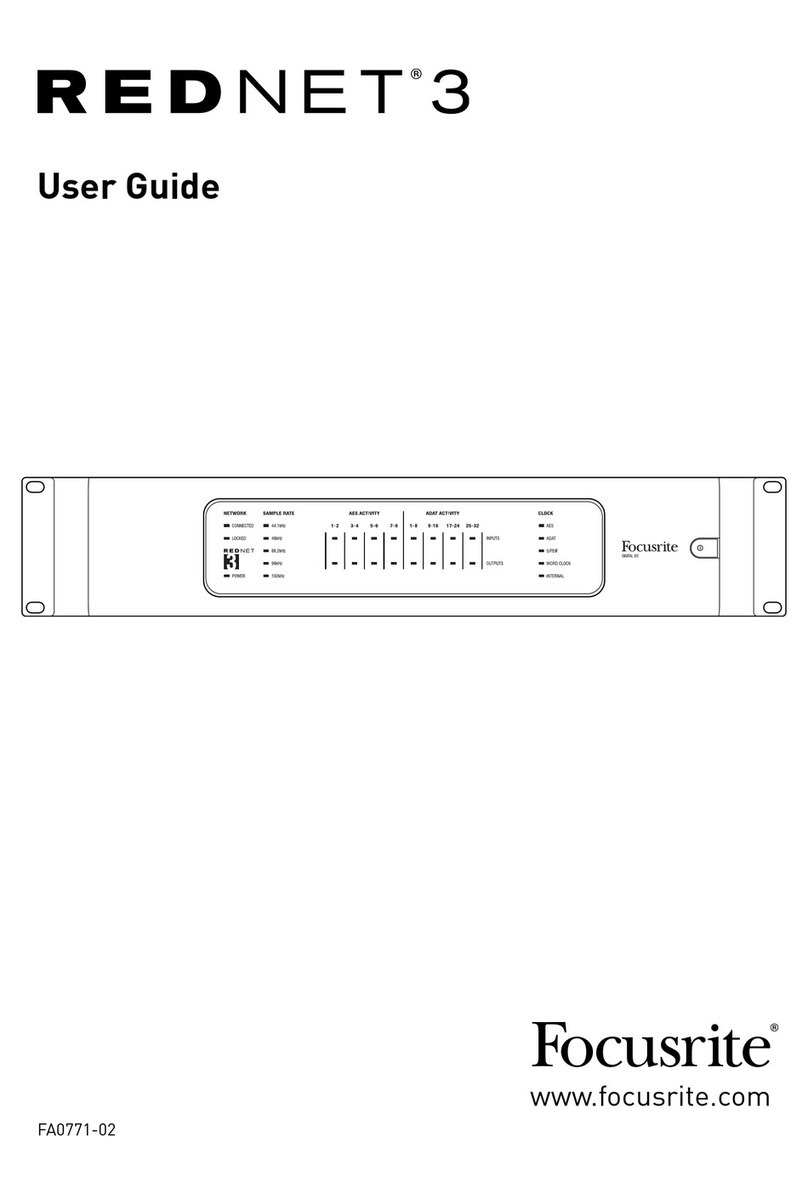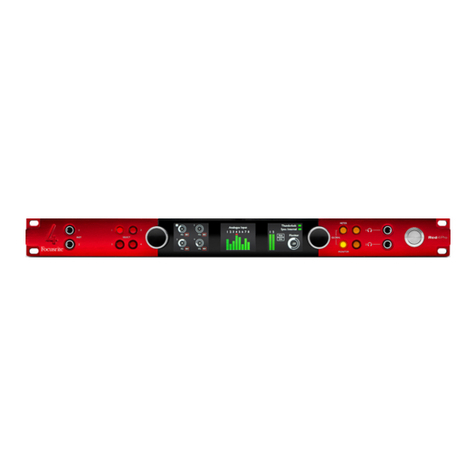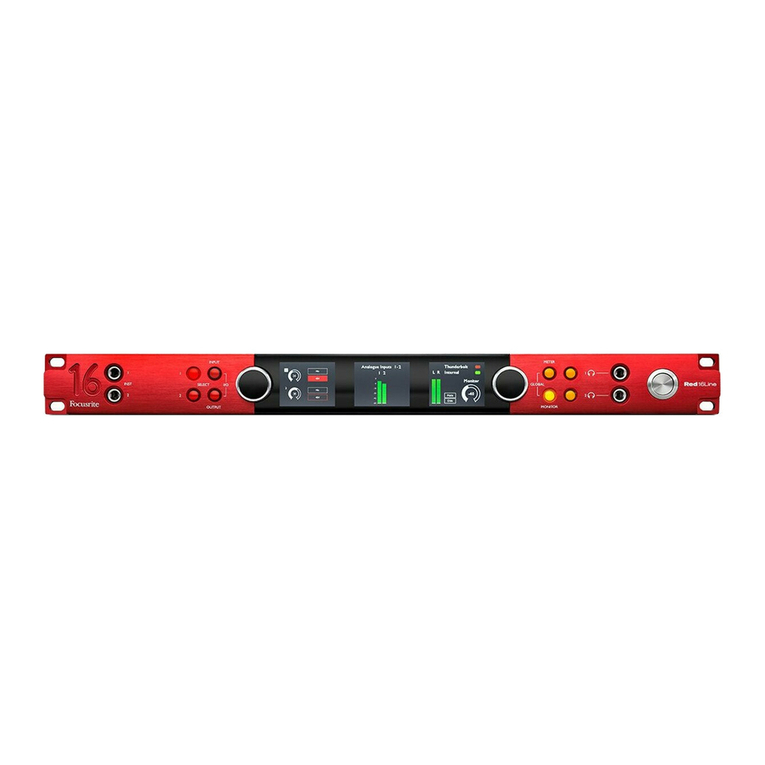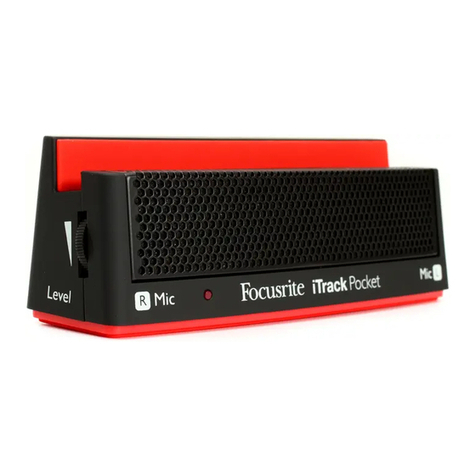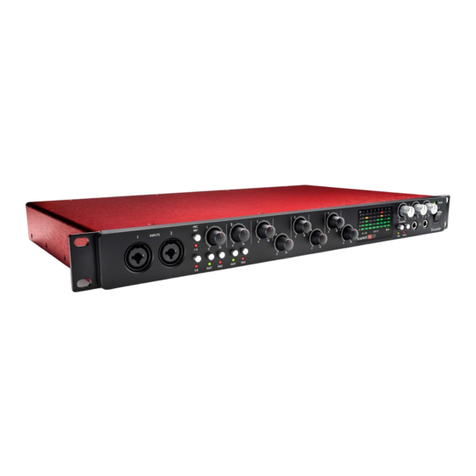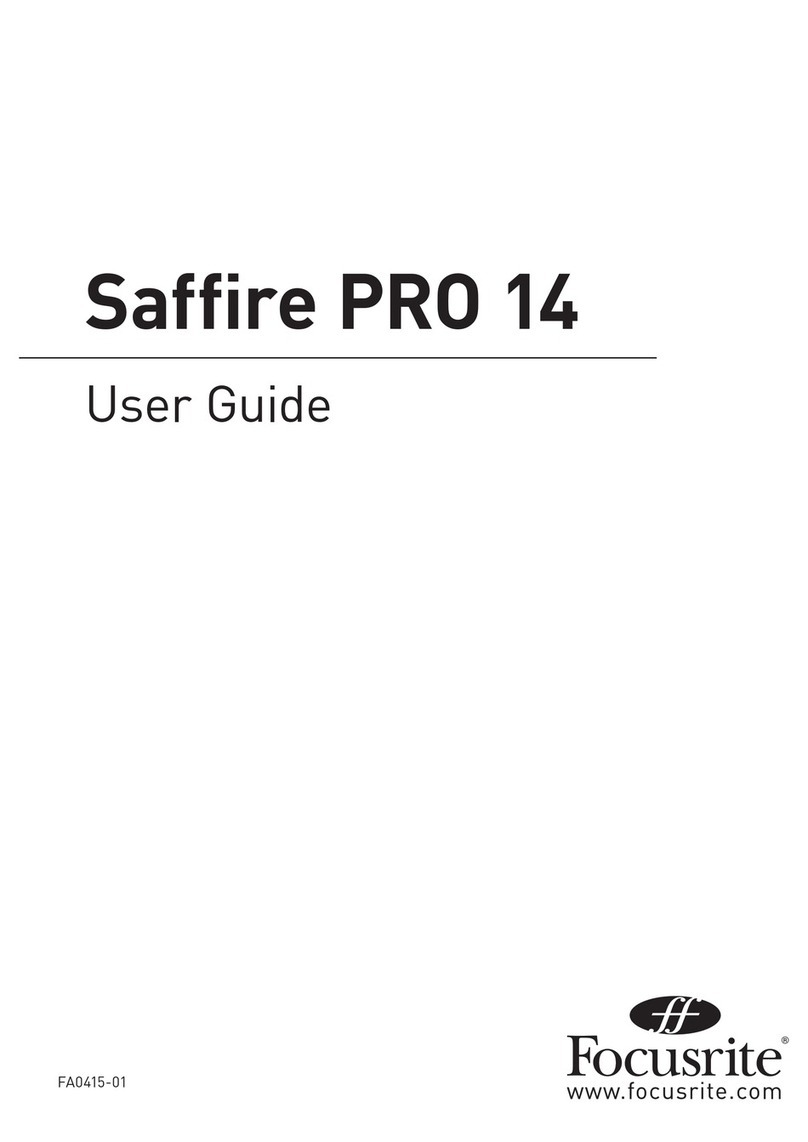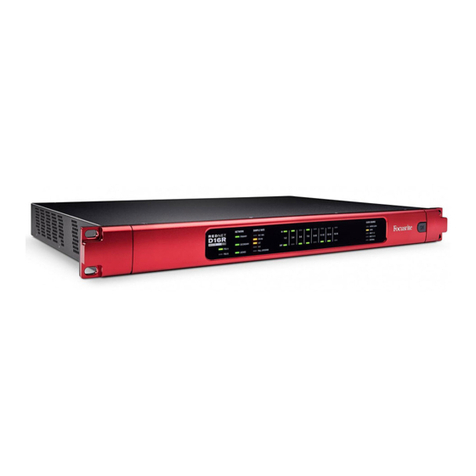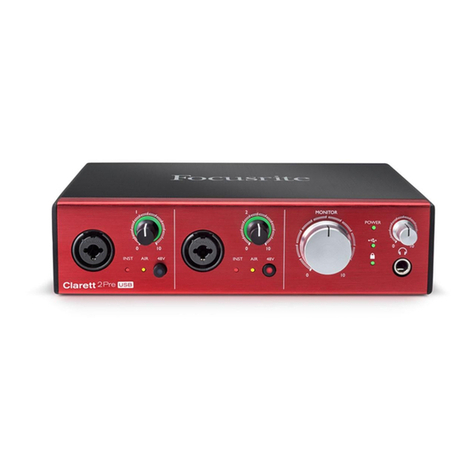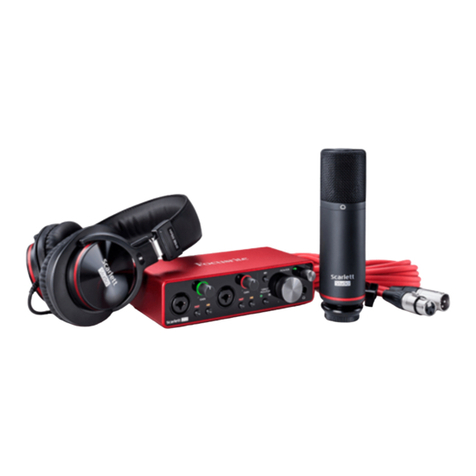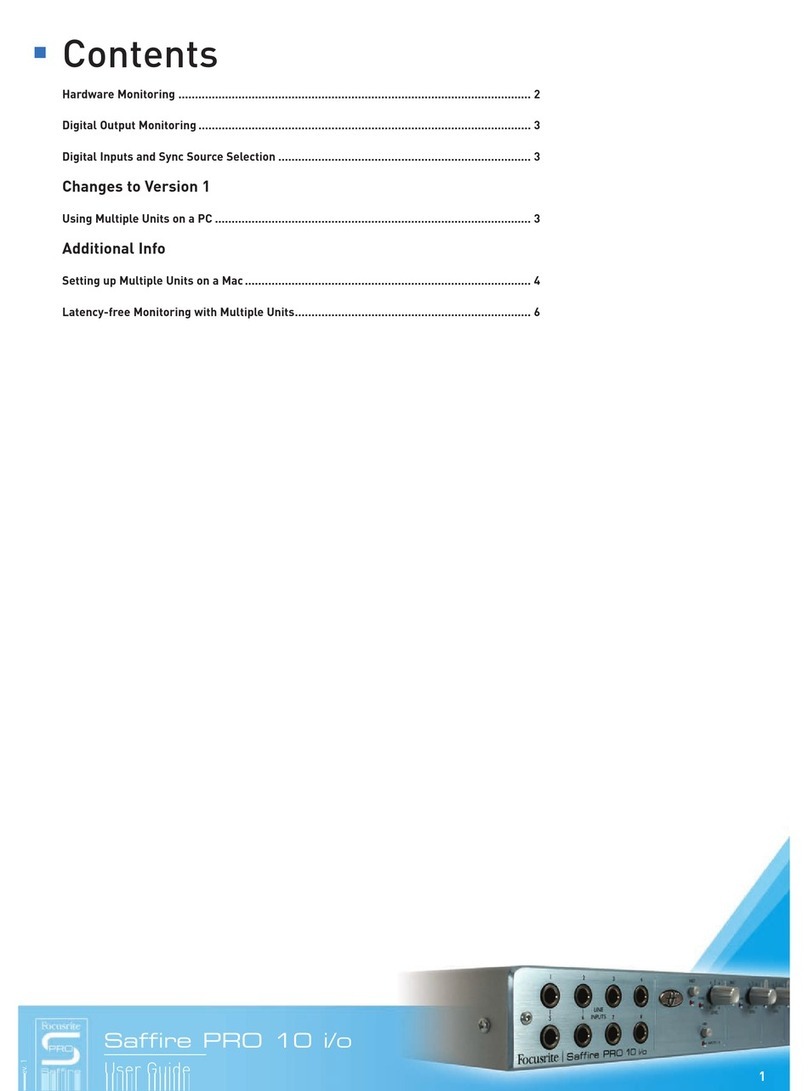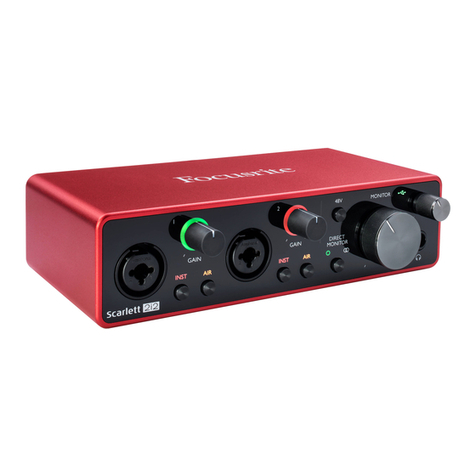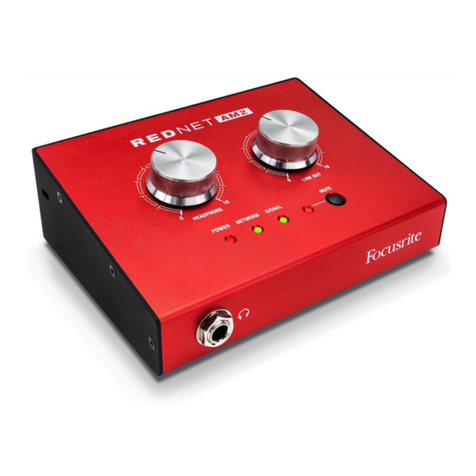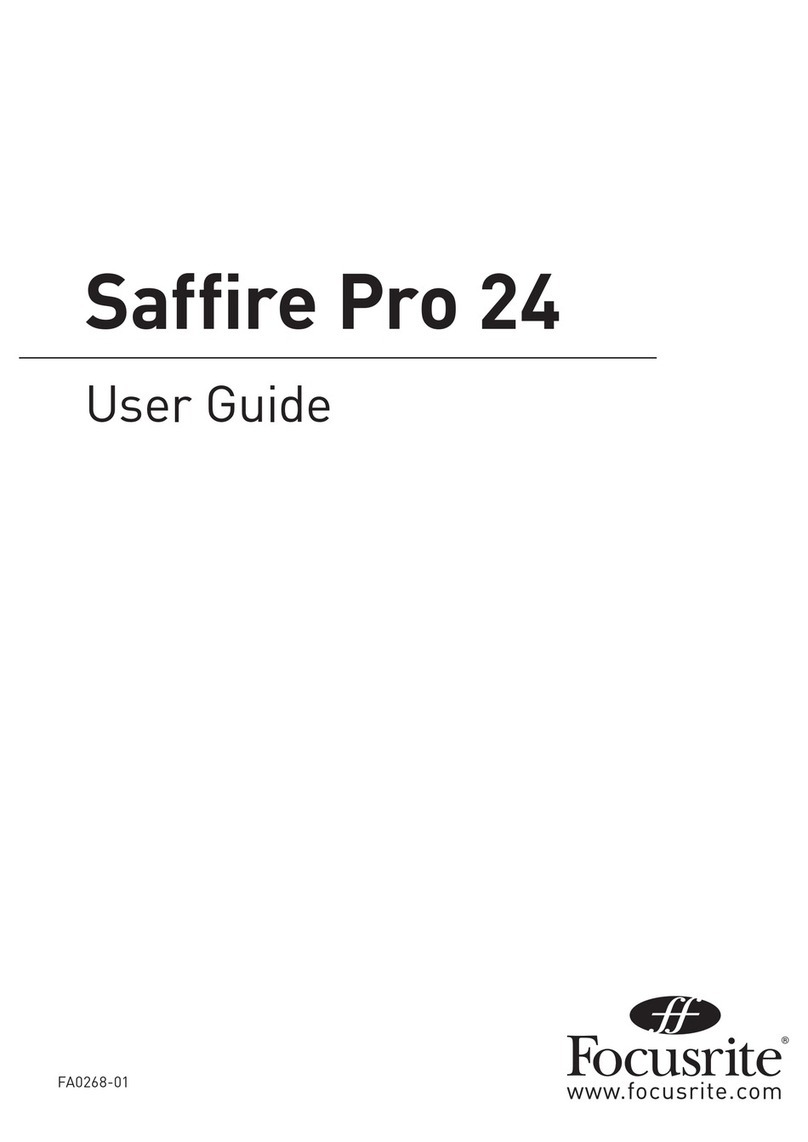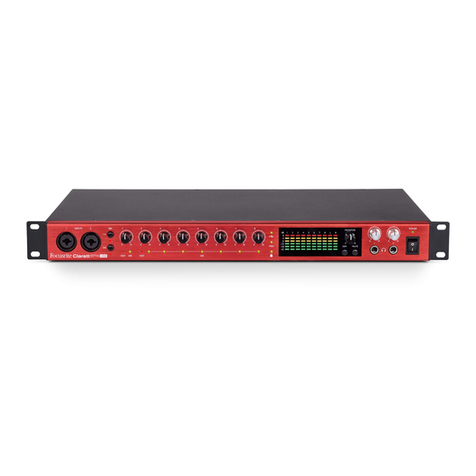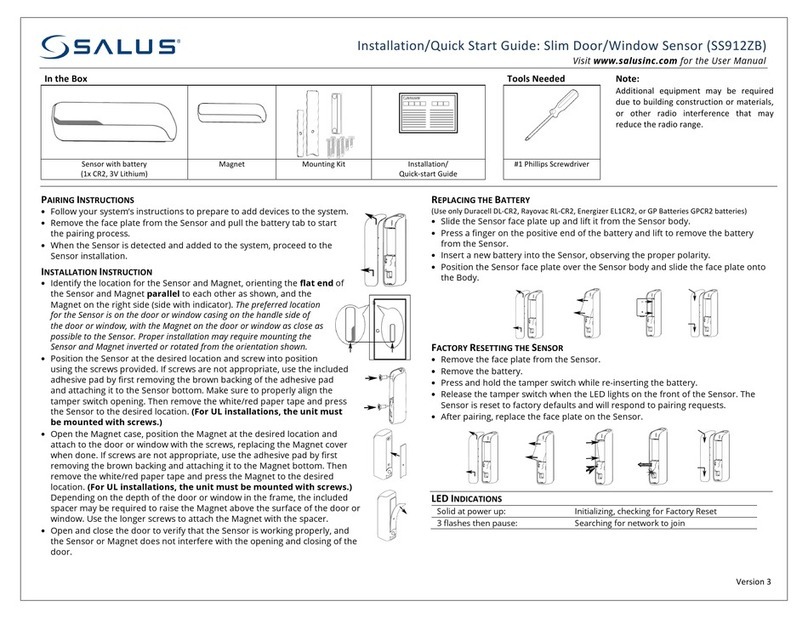
3
OVERVIEW
Introduction
Thank you for purchasing this Third Generation Scarlett 4i4, one of the family of Focusrite professional
computer audio interfaces incorporating high quality Focusrite analogue preamps. You now have a
simple and compact solution for routing high quality audio to and from your computer and you will
also be able to download some exciting new software plug-ins once you’ve registered the product.
In developing the Third Generation series of Scarlett interfaces, we have made further improvements
to both performance and features. Audio specications have been upgraded throughout the unit to
give you greater dynamic range and even lower noise and distortion; additionally, the mic preamp now
accepts higher input levels. An important enhancement is the inclusion of Focusrite’s AIR function.
Individually selectable on Inputs 1 and 2, AIR subtly modies the preamp’s frequency response to
model the sonic characteristics of our classic transformer-based ISA microphone preamps. When
recording with good quality microphones, you will notice an enhanced clarity and denition in the
important mid to high frequency range, just where it is most needed for vocals and many acoustic
instruments. Third Generation Scarlett interfaces are class compliant on macOS: this means they
are plug-and-play, so no need to install a driver if you are a Mac user.
This User Guide provides a detailed explanation of the hardware to help you achieve a thorough
understanding of the product’s operational features. We recommend both users who are new to
computer-based recording, as well as more experienced users, take the time to read through the
User Guide so you are fully aware of all the possibilities the Scarlett 4i4 and accompanying software
has to offer. If the main User Guide sections do not provide the information you need, be sure to
consult support.focusrite.com, which contains a comprehensive collection of answers to common
technical support queries.
Features
The Scarlett 4i4 hardware interface provides the means for connecting microphones, musical
instruments or line level audio signals to a computer running Mac OS or Windows. The signals at the
physical inputs can be routed to your audio recording software / digital audio workstation (referred
to throughout this User Guide as the “DAW”) at up to 24-bit, 192 kHz resolution; similarly, the DAW’s
monitor or recorded output will appear at the unit’s physical outputs.
Audio sources – mics, instruments, etc. - connected to the physical inputs can be recorded in the
DAW and routed from your DAW to the physical outputs. The 4i4 is equipped with four audio output
channels, which can be connected to an amplier and speakers, powered monitors, headphones, DJ
or other type of analogue mixer, or any other analogue audio equipment you wish to use. Although
all inputs and outputs on the Scarlett 4i4 are routed directly to and from your DAW for recording and
playback, you can congure the routing within the 4i4’s accompanying Focusrite Control application
To meet your needs. The 4i4 also acts as a convenient MIDI interface between your computer and
other MIDI equipment.
For DJs, the four analogue outputs make it possible to have a stereo main output and a headphone
cue channel when mixing internally on a laptop; alternatively you have two separate stereo outputs
at your disposal for connection to an analogue DJ mixer.
